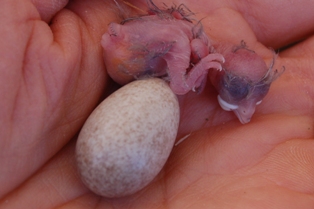Weaver news
| van Dijk RE, Eising CM, Merrill RM, Karadas F, Hatchwell B, Spottiswoode CN. 2012. Maternal effects in the highly communal sociable weaver may exacerbate brood reduction and prepare offspring for a competitive social environment. Oecologia online Abstract. Maternal effects can influence offspring phenotype with short- and long-term consequences. Yet, how the social environment may influence egg composition is not well understood. Here, we investigate how laying order and social environment predict maternal effects in the sociable weaver, Philetairus socius, a species that lives in massive communal nests which may be occupied by only a few to 100+ individuals in a single nest. This range of social environments is associated with variation in a number of phenotypic and life-history traits. We investigate whether maternal effects are adjusted accordingly. We found no evidence for the prediction that females might benefit from modifying brood hierarchies through an increased deposition of androgens with laying order. Instead, females appear to exacerbate brood reduction by decreasing the costly production of yolk mass and antioxidants with laying order. Additionally, we found that this effect did not depend on colony size. Finally, in accordance with an expected increased intensity of environmental stress with increasing colony size, we found that yolk androgen concentration increased with colony size. This result suggests that females may enhance the competitive ability of offspring raised in larger colonies, possibly preparing the offspring for a competitive social environment.
This study was conducted at Benfontein Game Farm near Kimberley, Northern Cape, South Africa during the summer of 2004–2005. Eight of the approximately 30 colonies were included in this study (see Benfontein). The size of the eight colonies varied from 8 to 128 individuals. The authors note that variation in colony size may influence competition for resources, and affect social interaction between females (reflected by steroid or carotenoid levels in the yolks of the offspring). Furthermore, colony size may be associated with the prevalence of parasites and disease, which may impose selection for maternal investment of antioxidants to enhance their young's immune system. The authors found that both laying sequence and social environment, as reflected by colony size, were associated with maternal effects. Later-laid eggs were heavier (with larger egg volume), but with lower yolk mass and lower concentrations of total carotenoids and vitamin E components, than earlier-laid eggs. The relationship between laying sequence and maternal effects was not influenced by colony size. Photo (above): Sociable Weaver egg and chick (from Upper Karoo trip). Literature as featured in Weaver Watch news items |











